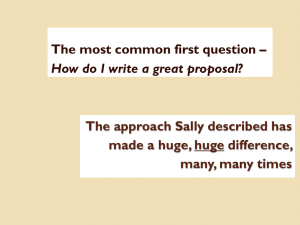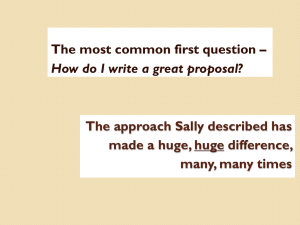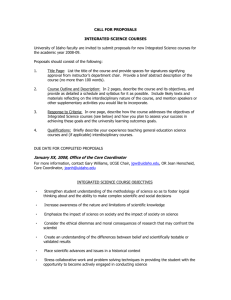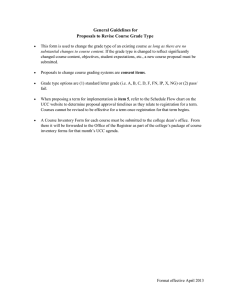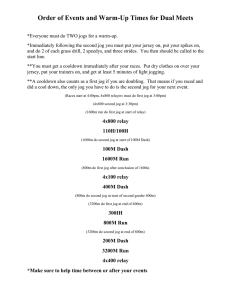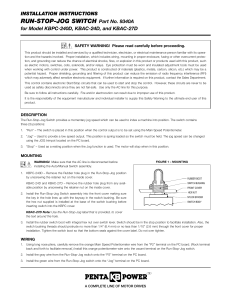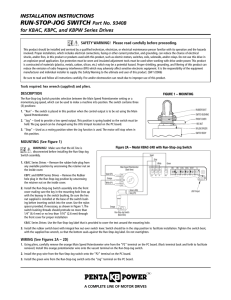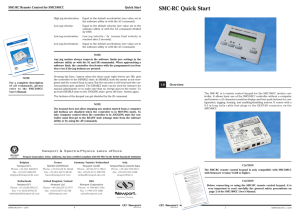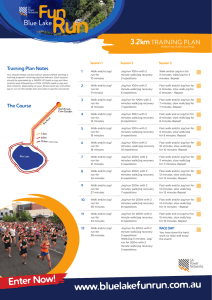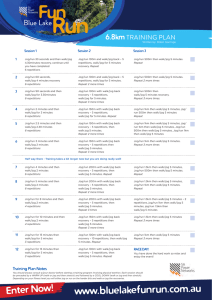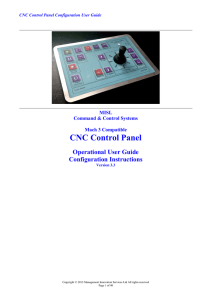Harbor Grant Writing Presentation
advertisement
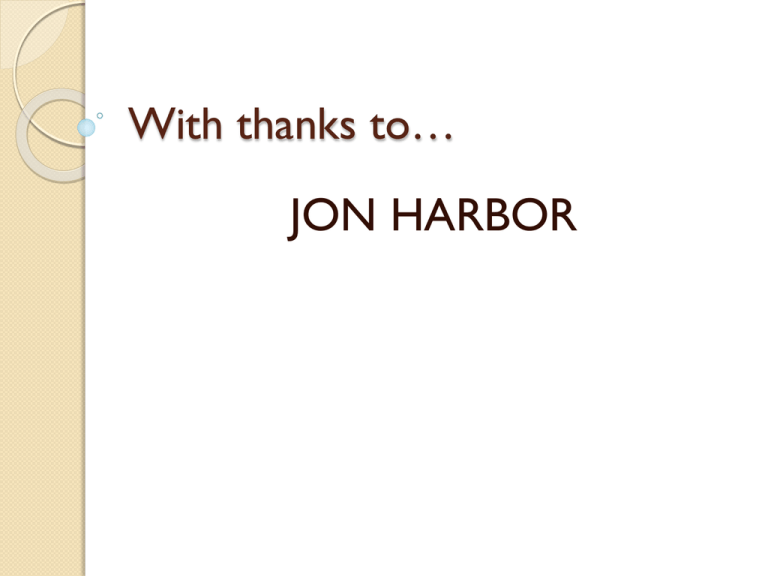
With thanks to… JON HARBOR The most common first question – How do I write a great proposal? The approach Sally described has made a huge, huge difference, many, many times Additional Thoughts: Volunteer to review proposals / serve on panels. Why? Don’t you hate it when students turn in work that does not match the assignment and grading rubric? Additional Thoughts: Consider linking research to teaching / “broader impacts” and vice versa Even if it is not required, it can be a significant competitive advantage and is often helpful for T&P. But what do I propose and to which funding source? It’s not rocket science (unless that’s your field ), Investigate a range of funding sources for this WALK, JOG, RUN 1991 Murray Center $5,000 1994 ARP $20,000 1996 SSHRC $86,000 1999 Sloan Foundation $399,000 2000 DoD $8.3m Over-achieve on the initial small grants to show funders you provide great return on investment! Maximize Your Odds I SUBMIT MULTIPLE PROPOSALS PER YEAR • FREQUENT, HIGH QUALITY SHOTS ON GOAL • SHOOT AT SEVERAL GOALS AND ALWAYS LOOK FOR NEW GOALS THAT POP UP • REVISE & RESUBMIT, REVISE & RESUBMIT • JOIN / MAKE TEAMS FOR SOME PROPOSALS why interdisciplinary teams? (semantics - they are usually transdisciplinary) How many grand challenges can be solved using only one discipline? The previous generation did all of the easy stuff within the discipline, the new frontier is … Most funding agencies have increasingly focused $ on interdisciplinary teams It’s fun and productive to bring new methods and perspectives to your work through collaborators It opens up new funding sources and new areas for your interests and talent that would not be possible on your own But don’t I have to be sole PI for T&P? I don’t just say it, I do it … my co-authors and co-PIs include: Psychiatry Health and Kinesiology Sociology Management Epidemiology Adolescent Development Social Work Nutrition in multiple institutions and countries. This morning I was working on…… Walk, Jog, Run Maximize your odds #s, different opps, teams
